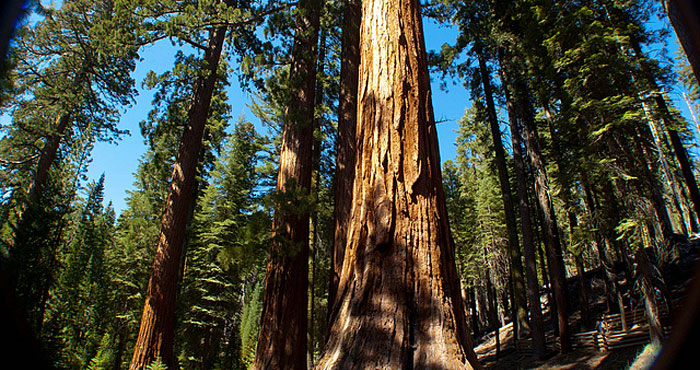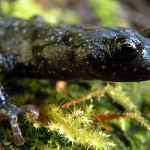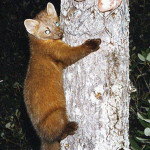
Contact:
Jennifer Benito
Save the Redwoods League
(415) 820-5814
jbenito@SaveTheRedwoods.org
SaveTheRedwoods.org
SAVE THE REDWOODS LEAGUE AWARDS NEARLY $100,000 FOR RESEARCH
— 8 grants focus on redwood forest ecology
SAN FRANCISCO (February 14, 2012) — Save the Redwoods League today announced more than $100,000 in research grants to fund projects that will expand scientific knowledge of the biology and ecology of coast redwood and giant sequoia forests. This research can help us answer big questions that will protect the health of people, wildlife, redwood forests and the entire planet. The grants were awarded to researchers at San Francisco State University, University of Wisconsin, U.S. Geological Survey, U.S. Department of Agriculture and The Regents of the University of California. The League is the only nonprofit organization dedicated to protecting ancient redwood forests throughout their natural range.
“Smart conservation requires more than land and habitat preservation,” said Emily Burns, science director of Save the Redwoods League. “With the threat of environmental changes, understanding what forests need to thrive is more vital than ever. Save the Redwoods League is proud to make new scientific discoveries possible through our annual research grants program.”
Save the Redwoods League specifically requested proposals this year that will help us understand how redwood forest wildlife is affected by forest management. The League awarded $15,000 to Keith Slauson and William J. Zielinski, Pacific Southwest Research Station, U.S. Department of Agriculture, Forest Service, for studying the effects of forest restoration in the redwood region on keystone foraging resources for birds and mammals. Understanding the time necessary for shrubs to grow and produce berries after a forest has been logged will help planners restore forests and create habitat for endangered wildlife.
“Many of our redwood forests are young and we need to use informed management practices to protect wildlife while the forests grow older. This research study will tell us how wildlife and the plants they depend on for food and shelter are recovering in maturing forests,” said Burns.
Since 1997, the League has awarded more than $1.17 million in research grants to fund redwood forest ecology projects that have provided the scientific community and public with valuable new information regarding relationships between living things and the redwood forest, redwood growth, forest restoration and wildlife habitat.
2012 Save the Redwoods League Grant Recipients (listed by county):
Dane County, Wisconsin
M. Zachariah Peery and R. William Henry, University of Wisconsin, Department of Forest and Wildlife Ecology received $14,992 to study foraging and population ecology of Steller’s jays in redwood forests and implications for marbled murrelet conservation. The study could help develop ways to manage these jays, which feed on imperiled marbled murrelet nestlings.
David Baum and Alison Scott, University of Wisconsin, Madison, received $14,974 to use modern technology to resolve an ancient mystery: unraveling the hexaploid origin of the coast redwood. How the coast redwood obtained six of each chromosome (three pairs) is not well understood. Discovering how coast redwoods evolved may help us understand their current adaptations and evaluate how they may respond to climate change.
Del Norte County, California
Phil van Mantgem and Leonel Arguello, U.S. Geological Survey, Redwood Field Station, received $14,963 for testing prescription fire as a restoration tool in coastal redwood forests. Prescribed fire is a new vegetation management technique in this forest type, and could be a good alternate method to restore inaccessible landscapes.
Theodore Weller, U.S. Department of Agriculture, Forest Service, received $7,289 for research that will help determine the role of coast redwoods as migratory corridors for hoary bats. If Weller shows that hoary bats use coast redwoods, this outcome will be another significant reason to protect and restore the forests.
Keith Slauson and William J. Zielinski, Pacific Southwest Research Station, U.S. Department of Agriculture, Forest Service, received $15,000 for studying the effects of forest restoration in the redwood region on keystone foraging resources for birds and mammals. Understanding the time necessary for shrubs to grow and produce berries after a forest has been logged will help planners restore forests and create habitat for endangered wildlife.
El Dorado County, California
Robert York and William Stewart, University of California, received $7,500 for studying giant sequoia age and size structure at Whitaker’s Forest. This project will contribute to the basic understanding of how giant sequoia forests respond to disturbances such as fire.
Hancock County, Maine
Chris Brinegar, professor, University of Maine, Farmington, received $14,266 for studying the genetic drift in understory plants of the redwood forest. Brinegar believes that western sword ferns and redwood sorrel suffer loss of genetic diversity in the southern part of the redwood range (south of San Francisco Bay), like the redwoods in that area.
San Francisco County, California
Vance Vredenburg and Cory S. Singer, San Francisco State University, received $14,999 for delineating past, present, and future effects of a fungal epidemic disease on the amphibian communities in coastal redwoods. Understanding more about the disease could help protect the unique amphibian species in coast redwood forests.
The League makes research findings available to the public to increase awareness of these unique resources. Grant recipients provide a final report that the League makes available through its website, SaveTheRedwoods.org.
Save the Redwoods League invites researchers to apply for grants on an annual basis. Please visit SaveTheRedwoods.org/research for more information on the research grants program.
About Save the Redwoods League
Since 1918, Save the Redwoods League has protected and restored redwood forests and connected people with their peace and beauty so these wonders of the natural world flourish. Unfortunately, some ancient redwoods remain unprotected, and forests that are protected face threats from a changing environment, disease and devastating government budget cuts. Donations help us save these special places, allowing us to purchase redwood land, restore logged forests, research how to best protect them and teach children and adults about these magical expressions of life. To date the League has completed the purchase of more than 189,000 acres of redwood forest and associated land. For more information, please visit SaveTheRedwoods.org, or to receive monthly email updates, sign up at SaveTheRedwoods.org/signup.
Tags: 2012, Press Release

